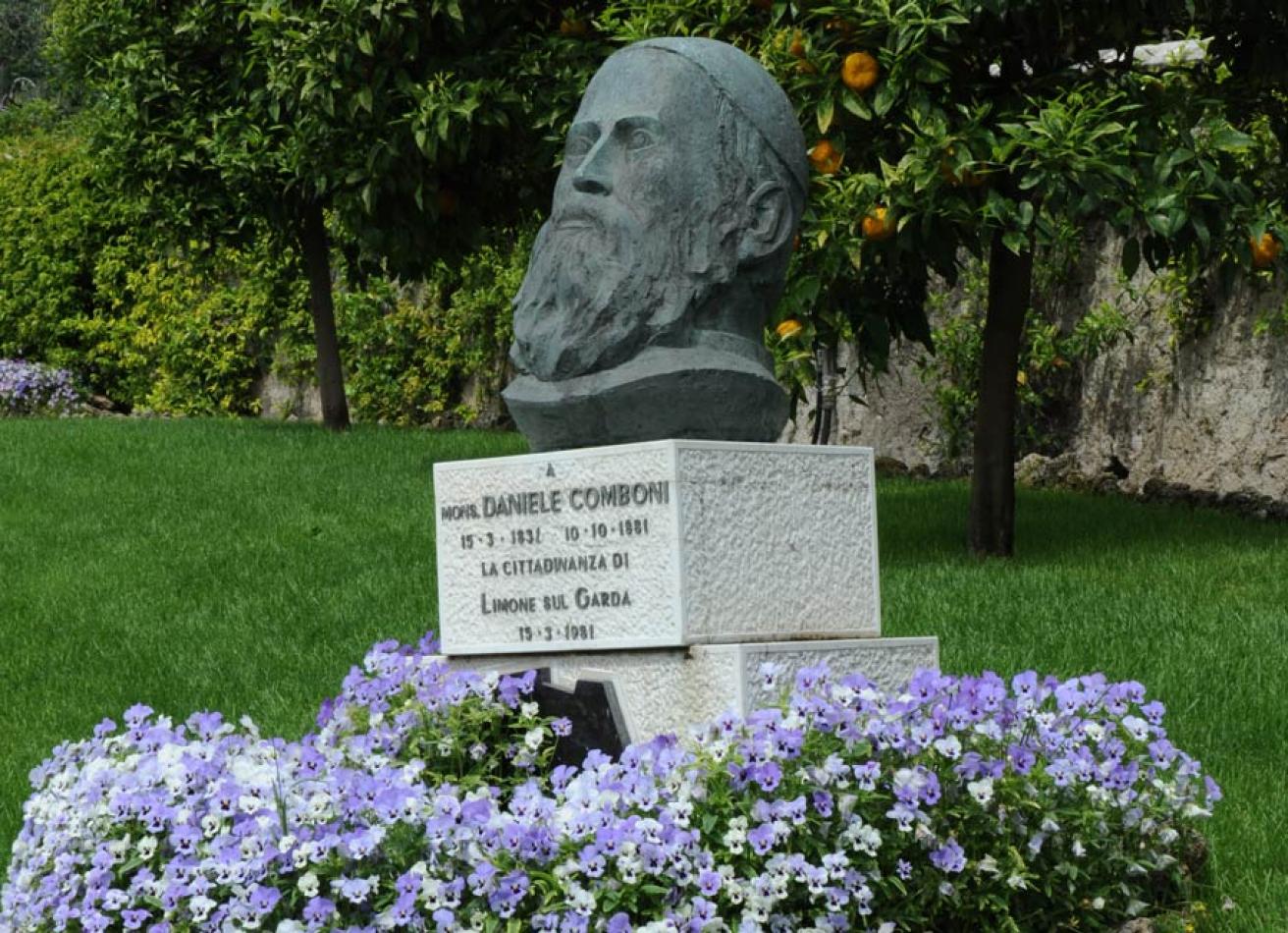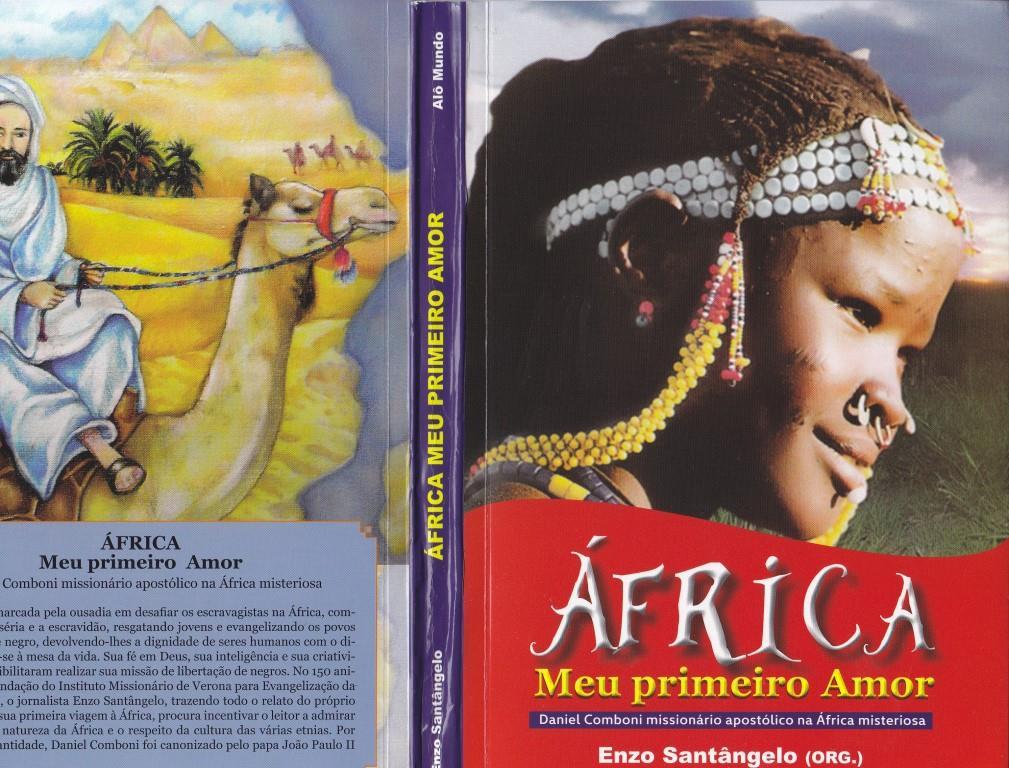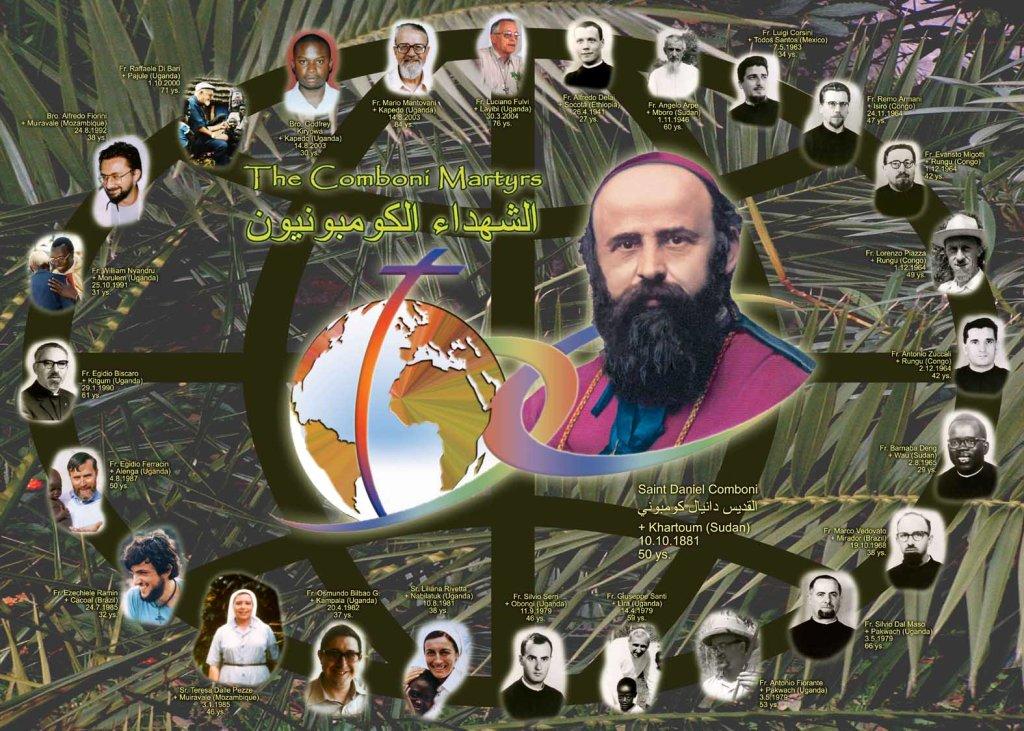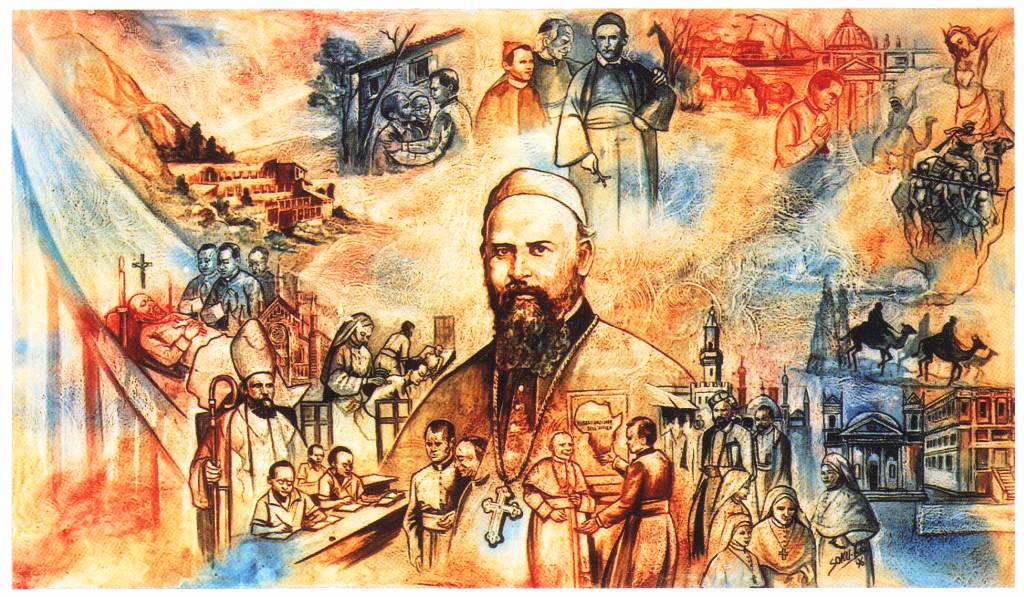Daniel Comboni
Comboni Missionaries
Institutional area
Other links
Newsletter
Monday, March 15, 2021
As we celebrate the 190th anniversary of the birth of Daniel Comboni (Limone Sul Garda, 15 March 1831) and the 140th anniversary of his death (Khartoum, 10 October 1881), we are invited to celebrate our charismatic memorial and to invoke the presence of the Spirit which illumined his life from birth to death. [Daniele Comboni]
Daniele Comboni:
the story of a saintly man
Daniele was born in Limone sul Garda on March 15, 1831, to a humble family that lived in the custodian’s dwelling of the lemon-house in Tesöl. (interesting note: up until 1859, Limone belonged to the Austrian-Hungarian empire, so Daniele Comboni was therefore born with Austrian nationality)
On February 20, 1843, at 12 years of age, Daniele entered the Mazzanian boarding school founded by Canon Nicola Mazza in Verona for needy, gifted children
On January 6, 1849, at 18 years of age, he pledged to devote his life to the evangelization of Africa
Up until 1854, when he was 23 years old, Daniele studied French, German and English at the school
On December 31, 1854, when he was 23 years old, he was ordained a priest in the Trento Cathedral by the Blessed Bishop De Tschiderer
Daniele took his first trip to Africa when he was 26 years old. He set sail from the Trieste Port with five other missionaries and a layperson on September 6, 1857. thereby making his dream come true and participating in the Mazzanian missionary expedition to Central Africa according to Don Nicola Mazza’s plan (his teacher in the seminary). In those days, traveling was not easy in Europe, so imagine what it was like to travel to Africa! Besides the lack of maps and modern means of transportation, travelers had to contend with the heat and also with the diseases and illness caused by insect bites or the local food and water. It was a deadly risk for a European missionary, who never knew when or if he would return. Despite the adversities, the missionary group reached Khartoum in Sudan on January 8, 1858, and traveled up the Nile River to the mission that was presided over by the only survivor of 5 German missionaries (interesting note: Daniele always remained in contact with German institutes and missionaries. He traveled in Europe and Africa under the protection of the Austrian Emperor with a consular visa that was quite important and unlimited at the time.)
Daniele returned to Verona in 1859, when he was 28 years old. He was the only survivor of the group of missionaries that set sail from Trieste three years earlier. He was already ill, but wanted and obtained the assignment to teach young Africans who were freed from slavery (at the time, Africans were only considered useful as slaves). Incredibly, Daniele created dictionaries and grammar books in the unwritten African languages that he encountered during that first mission: Denka, Bari, Cordofan and Nuba
A turning point in Daniele’s life occurred on September 15, 1864, when he was 33 years old. While praying at Saint Peter’s tomb in Rome, Daniele got the inspiration for a “Plan to regenerate Africa through Africa itself.” Reflecting upon his experience, he reached the conclusion that missionary work in Africa had to change method. Since the deadly climate and environmental conditions did not allow European missionaries to penetrate the continent directly, it became absolutely necessary to prepare the Africans themselves. That meant that the salvation of Africa had to occur through the Africans. This was a powerful consideration for the Church at the time because Africans were not considered equal to the white man. With that intuition, Daniele acknowledged the capacity of Africa to redeem itself on all levels: moral, cultural and social
Don Nicola Mazza, the founder of the Istituto Mazziano to which Daniele belonged, died when Daniele was 34 years old. Due to the institute’s serious financial situation and other difficulties created by people who no longer had faith in the project, Don Mazza’s successor closed the African mission and Daniele remained alone
In May of 1867, Daniele, who was 36 years old at the time, opened the Men’s Institute for Missions in ‘Nigrizia’ in a humble house in Verona. This institute, which would later become the Combonian Missionary Institute, became a point of reference for missionaries who wanted to continue their work. These people came from institutes that could no longer support African missions due to financial reasons. At the end of that same year, Daniele, along with three Camilian fathers, three French nuns and 16 African women educated in Europe, set out for Egypt to set up one of the first institutes in Cairo. He immediately returned to Europe to personally recruit volunteers and means, traveling to several European capitals for that purpose (France, Germany, Austria, England, Belgium, Switzerland, Russia and the Netherlands). It was important for his Plan that his missionary work was not sponsored by a single country, because it had to be considered a project involving all of Europe. The idea was not to westernize Africa, but to valorize and “regenerate” the continent through its own culture and traditions.
In January 1872, when Daniele was 41 years old, he founded the Istituto delle Pie Madri della Nigrizia [Institute of the Pius Mothers of Africa], the first female missionary institute of history and the first founded by Daniele. He was a strong believer and advocate of this institute, which would later become fundamental for the Combonians’ work and is still instrumental today. Daniele wrote these words about the institute: “…With the same ease with which they teach the ABC’s to abandoned orphans in Europe, they cope with months of travel in Central Africa in 60 degree centigrade heat. They cross deserts on the backs of camels and they ride and tame horses. They sleep under the stars, under a tree or in the corner of an Arab boat. They threaten the armed Bedouin, they rebuke men for their vices, they assist soldiers in hospitals, they demand justice for the oppressed and the wretched from Turkish courts or from the Pasha, and they do not fear the hyena or the lion’s roar…”. Daniele was nominated pro-Vicar Apostolic of Central Africa on May 26. The missionary spirit was so strong in that period that his first African collaborators were able to begin their work
When he was 42 years old, Daniele went to Khartoum in May of 1873 and devoted all of his efforts towards the implementation of his plan
Daniele returned to Europe in 1876, at 45 years of age, for the purpose of reorganizing the two Missionary Institutes in Verona. Once again, he personally recruited volunteers and sought financing and resources
When he was 46 years old, Daniele was nominated Vicar Apostolic of Central Africa on July 11, 1877. On August 12 he was consecrated the Bishop of Claudiopolis (the Latin name for the city of Cluj in Romania). He traveled throughout Europe to promote the missions. He left for Africa on December 3 with the first five Pious Mothers of his institute
Daniele received a triumphant welcome in Khartoum in April of 1878, when he was 47 years old, and immediately had to cope with one of Sudan’s worst famines
In 1879, when he was 48 years old, Daniele was forced to return to Italy due to his precarious health that had been undermined by continuous fevers. Nevertheless, he demonstrated an incredible tenacity for his mission and took that occasion to complete organization of his institutes in Verona
In 1880, when he was 49 years old, Daniele returned to Sudan and began visiting the missions of the Vicariate (Khartoum, El-Obeid, Malbes, Dilling). He set out from Dilling to explore the Nuba Mountains with the idea of founding a mission further at the center of Africa. Daniele had a strong constitution, but the immense physical and moral stress and strain (many missionaries, assistants and nuns unexpectedly died due to illness) and all sorts of sacrifices would prove fatal
Daniele was struck by fever on October 5, 1881, when he was 50 years old. He became delirious on October 10 and died at 10:00 p.m. that evening, assisted by his nuns and a Canadian missionary who was present. Daniele was buried in the mission garden the following day
During the Mahdi Revolution (1881-1898), when many missionaries were killed and many missions were destroyed for religious reasons, Daniele Comboni’s tomb was desecrated and his bones were scattered. When the first two missionaries could return to Khartoum, they found a few bone fragments that were put in an urn and placed in the church of Aswan in Egypt
Daniele’s far-sighted intuition to “save Africa through Africa” produced new results in the 20th century, and two Combonian Institutes were founded for laypeople: the Secular Institute of Combonian Missionaries in 1969 and the Combonian Lay Missionaries in 1990
The miracle involving the African-Brazilian girl Maria José de Oliviera Paixão that was granted through Father Daniele’s intercession was recognized on April 6, 1995
Daniele Comboni was beatified by Pope John Paul II on March 17, 1996
The second miracle involving Lubna Abdel Aziz, a Muslim mother from Sudan, which was granted through the intercession of Blessed Father Daniele Comboni, was recognized on December 20, 2002
Daniele Comboni was made a saint by Pope John Paul II on October 5, 2003.






